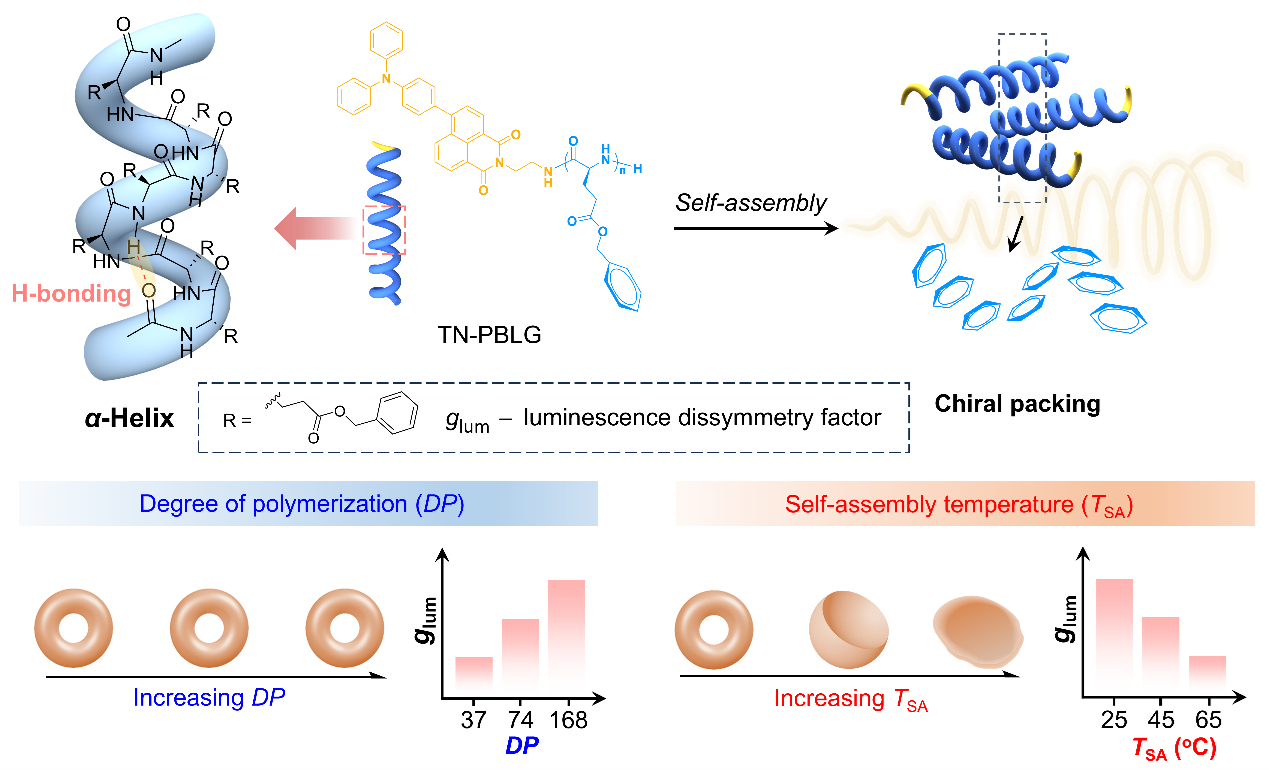Owing to the significant potential of circularly polarized luminescence (CPL) in biomedical applications, biomolecule-based CPL-active nanostructures with aqueous dispersibility have attracted increasing attention in recent years. Nevertheless, research in this area remains limited, and mechanistic studies on chiral generation, transfer, and amplification are still at an early stage. Consequently, developing biodegradable CPL nanomaterials in aqueous media and establishing structure–property relationships between chiral motifs, nanostructures, and CPL performance is essential.
Ben Zhong Tang, The Chinese University of Hong Kong, Shenzhen (CUHK-Shenzhen), and colleagues have designed the fluorescent homopolypeptide TN-PBLG, which shows strong fluorescence in both dissolved and aggregated states. The researchers systematically investigated aqueous supramolecular CPL modulation via α-helix-dominated hierarchical chirality transfer, influenced by the degree of polymerization (DP) and self-assembly temperature (TSA) in self-assembled TN-PBLG. They found that increasing DP enhances intrachain hydrogen bonding (H-bonding), stabilizing the α-helical structure of TN-PBLG and amplifying the luminescence dissymmetry factor (glum). Conversely, increasing TSA disrupts helical rigidity, reducing glum values while triggering a progressive morphological evolution from nanotoroids to nanoplates.
According to the researchers, these findings highlight the critical role of α-helices stabilized by intrachain H-bonding in guiding the chiral packing of polypeptide chains during self-assembly, enabling precise control over CPL properties in aqueous media.
- a-Helix-Driven Regulation of Aqueous Circularly Polarized Luminescence in Homopolypeptide Self-Assembly
Jinhui Jiang, Ziyue Ye, Siwei Zhang, Fulong Ma, Lin Lu, Zijie Qiu, Jianwei Sun, Yu Xiong, Zheng Zhao, Jacky W. Y. Lam, Ben Zhong Tang
Aggregate 2025
https://doi.org/10.1002/agt2.70123


